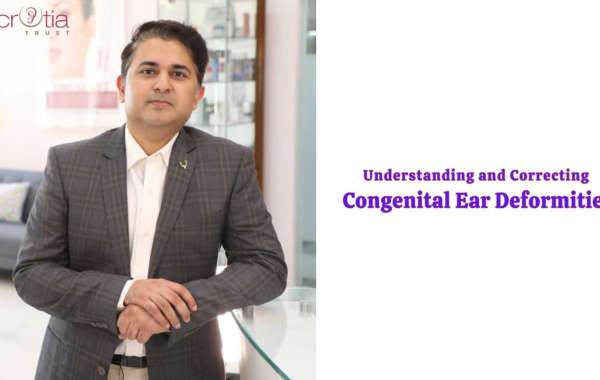These deformities can lead to various challenges, such as hearing impairment, ear infections, and cosmetic concerns. Although the exact causes of congenital ear deformities remain unclear, factors like insufficient blood supply during fetal growth, medication usage, genetic factors, accidents, or trauma can contribute to their occurrence.
In this blog, we will delve into different types of ear deformities and their potential treatments. The insights used to write this blog have been taken from Dr. Parag Telang, a renowned ear surgeon who has gained global recognition for his pioneering work in the realm of microtia and ear deformity reconstruction. With expertise spanning across India, the USA, and England, Dr. Telang has emerged as the best ear surgeon in Mumbai, particularly for children born with missing or malformed ears. Let’s understand about these deformities and their treatments.
Types of Ear Deformities
Anotia
Anotia is a rare congenital defect where the external ear is completely absent, affecting one or both ears. This condition often leads to conductive hearing loss due to the disruption in sound wave transmission from the external ear canal to the eardrum. Early intervention, such as surgical reconstruction, can help improve both hearing and appearance.
Microtia
Microtia is characterized by an underdeveloped outer ear, resulting in a partially formed or completely missing external ear. This condition can be addressed through microtia surgery, which involves reconstructing the ear using the patient's own tissue, restoring not only the appearance but also potentially improving hearing.
Cup Ear
Cup ear, a deformation of the ear's upper rim, can range from mild to severe. In mild cases, only the upper rim is affected, while severe cases involve the squeezing of the helix cartilage and escape, causing them to form a roll. Surgical and non-surgical options are available to correct this deformity and restore the natural contour of the ear.
Cryptotia
Cryptotia, often referred to as the hidden ear, occurs when the upper part of the ear is buried beneath the scalp's skin. This anomaly is a result of the ear failing to separate and rise from the skin. Surgical interventions can help expose the ear and improve its appearance.
Bat Ear
Bat ear, or prominent ear, refers to ears that protrude abnormally due to the large concha, underdeveloped anti-helix, and scapha. While not causing functional issues, this deformity can impact one's self-esteem. Surgical and non-surgical approaches can effectively correct this concern, restoring balance to facial aesthetics.
Ear Tags
Ear tags, also known as branchial cleft remnants, are benign skin and cartilage growths often found in front of the ear. These tags can either arise due to genetic syndromes or develop independently. Surgical removal may be recommended, especially if the tags cause discomfort or are of cosmetic concern.
Treatment Options
Dealing with congenital ear deformities requires specialized care. Surgical procedures such as otoplasty, or ear reconstruction, are common methods to correct these deformities. Otoplasty involves reshaping the ear using permanent sutures and even using rib cartilage to restore a natural ear structure. An experienced plastic surgeon, like Dr. Parag Telang at Designer Bodyz, can provide the expertise needed for successful outcomes.
Whether it's restoring a missing ear, correcting ear positioning, or enhancing the appearance of protruding ears, seeking professional consultation is the first step toward regaining self-assurance and achieving harmony with one's facial features. If one is looking for a top ear surgeon, one should consult with Dr. Parag Telang at The Microtia Trust today.










